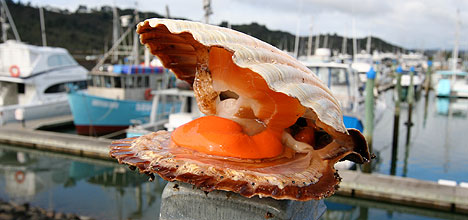The shellfish ban in the Bay of Plenty may be reduced in area this week. 'The indications are that we might be cutting back the amount of coastline affected, depending on what today's results show,” says Medical Officer of Health Dr Phil Shoemack.
'We are still not quite sure at this stage, we will be getting one more set of results today, and once we have got those we will be in touch with the Food Safety Authority.
'At this stage the warning is as it has been for over 12 months.”
Weekly monitoring since the original warning was issued in December 2009, has until now shown continuing high levels of paralytic shellfish poison (PSP) present in shellfish along the BOP coastline.
The affected area includes the entire coastline from Tairua (including Tairua Harbour) south, including Opoutere, Onemana, Whangamata, and Whiritoa, east along the Bay of Plenty coastline from Waihi Beach, including Tauranga Harbour to the mouth of the Whakatane River in the Eastern Bay of Plenty.
Included are all inshore islands within the above area. The coastline eastward from Ohope Beach remains unaffected.
The health warning applies to all bi-valve shellfish including mussels, pipi, tuatua, cockles, oysters, scallops as well as catseyes and kina (sea urchin).
Paua, crayfish and crabs can still be taken but as always, the gut should be removed before cooking.
Consumption of shellfish affected by the paralytic shellfish toxin can cause numbness and tingling around the mouth, face or extremities; difficulty swallowing or breathing; dizziness; double vision; and in severe cases, paralysis and respiratory failure.
These symptoms usually occur within 12 hours of a person consuming affected shellfish.
Anyone suffering illness after eating shellfish should seek medical attention.



0 comments
Leave a Comment
You must be logged in to make a comment.